“What kind of telescope should I buy?” “How much should I spend on my first telescope?” “What are the differences between Dobsonians and Newtonians; reflectors and refractors?”
These are just some of the questions we regularly hear from readers who want to take their first steps in the world of practical astronomy.
They are certainly worth consideration to ensure you spend as little of your heard-earned cash to get great views of the night sky.
Tucked away in the corners of many garages and spare rooms sit dormant telescopes: telescopes designed to gather views of moons, stars and planets, purchased with excitement, but now gathering dust.
Perhaps some were too cumbersome to take in and out at night, others too complicated to set up, or maybe underwhelming views led to disappointment.
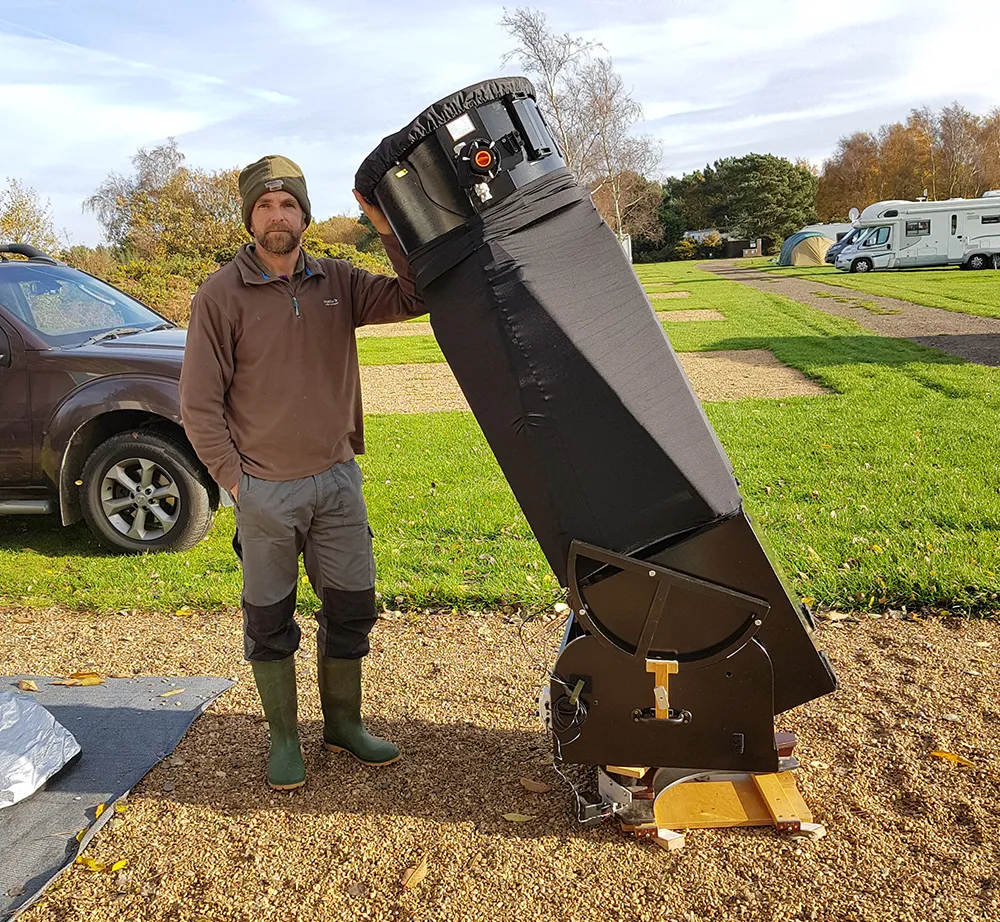
As we look at the question “What type of telescope should I buy?”, we can say from the outset that the best telescope is one that is practical and comfortable to use regularly, and that provides exciting views of the night sky.
Admittedly, there is a bewildering array of equipment available; however, we can divide all those variations into just three basic types.
Most people will recognise the first type of telescope invented, which are known as refractors.
These employ glass lenses at the end of a tube to bring a magnified view of the sky to focus.
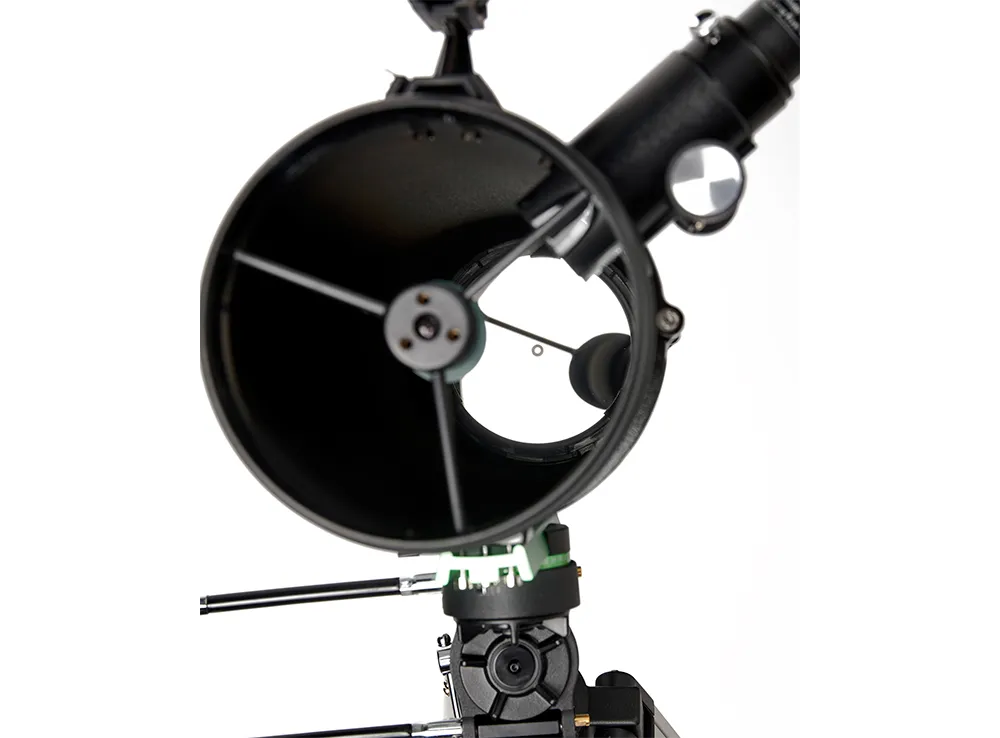
The second type we will consider, invented by Isaac Newton, are known as reflectors because they utilise mirrors instead of lenses to achieve an enlarged sky view.
The final type of telescope design involves mirrors with a hole in the middle. We call telescopes of this type Cassegrains.
With this basic separation into groups established, we can review the benefits and compromises of each.
Read our guide to the best beginner telescopes, or if portability is your thing, find out which models made our list of the best travel telescopes. And we've also put together a list of the best telescopes for kids.
Refractors
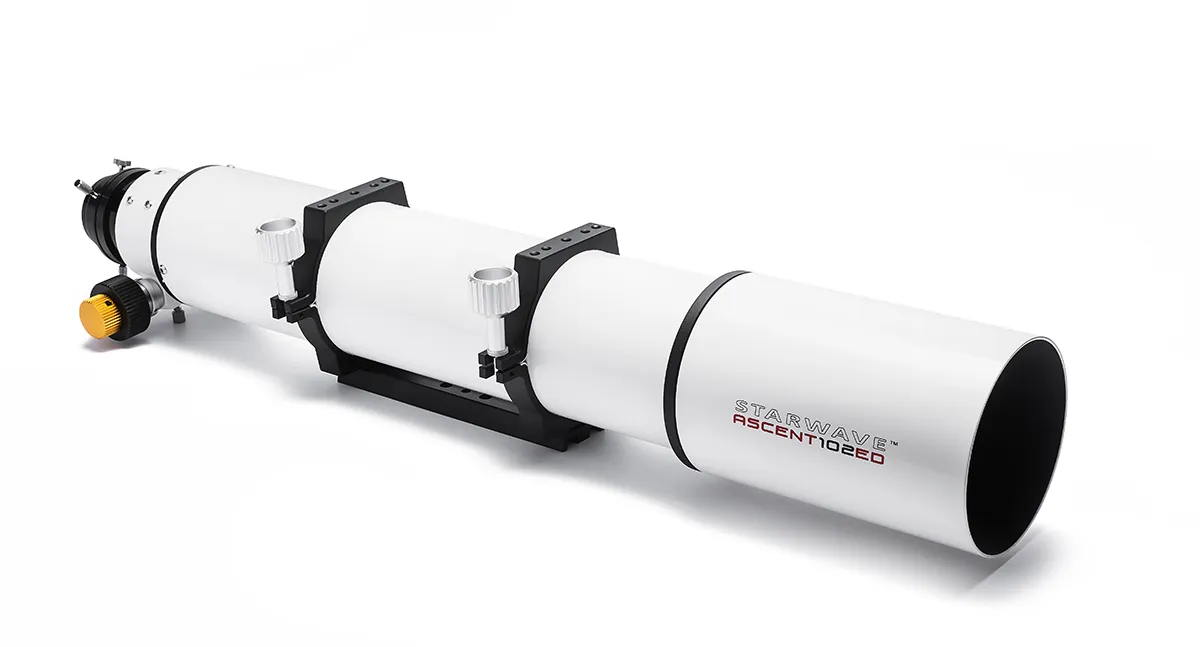
The most popular type of telescope, refractors have many appealing qualities.
They tend to be lightweight, easy to set up and intuitive to use, give sharp views and require practically no maintenance.
Interchangeable eyepieces offer varying magnifications and increase the range of viewable objects.
Good portability allows for trips to enjoy darker skies away from light polluted areas.
However, there is a saying in the world of telescopes that ‘aperture is king’. Or in basic terms, bigger is better.
When it comes to visual astronomy, bigger telescopes yield more impressive views.
In this respect refractors have limits. Very large lenses are prohibitively expensive and quite unmanageable for amateurs.
The right telescope can be determined by deciding where and how you will use your telescope; maybe at home, or to take to dark-sky sites.
Refracting telescopes available to the amateur today therefore tend to be available in apertures between 60 – 150mm.
Within that range we find inexpensive models with a single front lens, up to telescopes with multiple lenses that provide a sharper more natural view, at a premium price point.
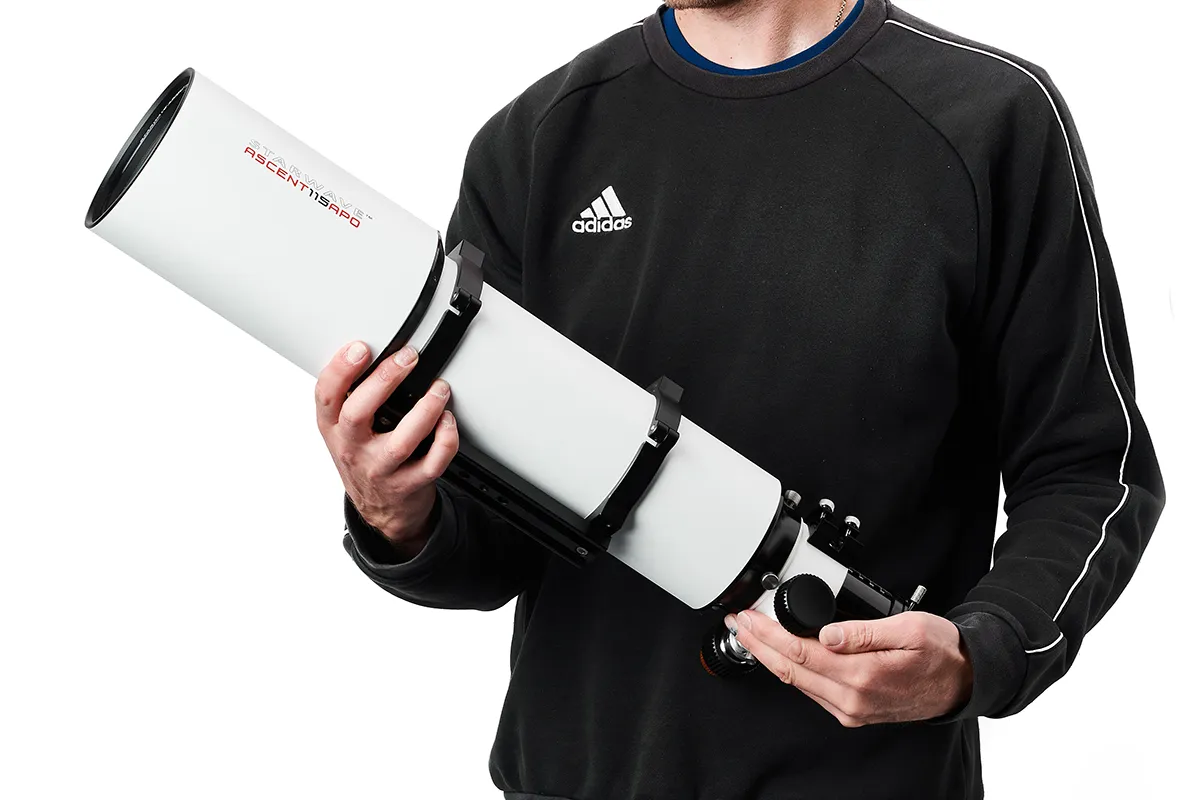
The quality of the optics in the telescope, determined predominantly by their cost, will have a significant bearing on the quality of the views, and the cheap refractors that tend to be popular at electrical goods and camera shops are often disappointing.
Generally speaking, smaller refractors less than 90mm diameter are best suited for wider views of the night sky, which might include star clusters like the famous Pleiades, M45.
Although some detail and moons may be seen when observing Jupiter and Saturn, in either case the planet itself will appear quite small and very bright in the view.
Some brighter galaxies and nebulae may be visible under good skies, and with experience it becomes easier to pick out the interesting objects.
However, larger refractors 100mm in diameter and upwards can really open up the skies, and under reasonably dark skies there will be hundreds of deep-sky objects that can be viewed including galaxies, globular clusters of stars and bright nebulae.
Surface colours and details may be seen on Saturn, Jupiter and even Mars on a good night.
Lunar views too should be sharp with good definition in craters and rille features, as the larger optics enable the telescope to reveal more detail.
There is no doubt that a decent refractor, on a sturdy mount or tripod, can provide a thrilling stargazing experience, and whet the appetite for further sessions for many years.
Reflectors
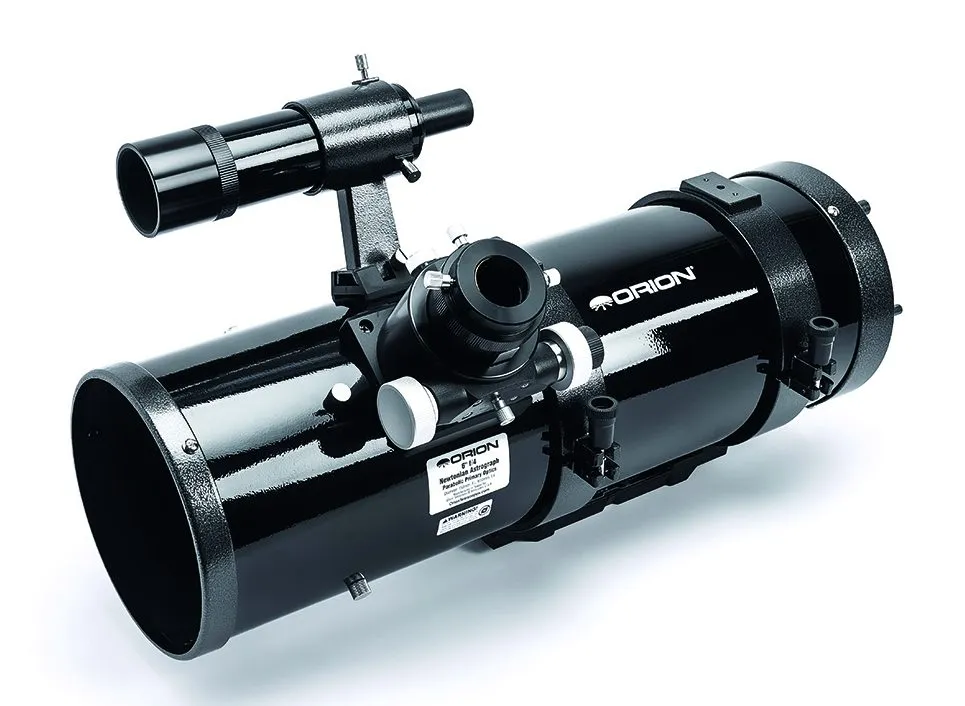
Reflecting telescopes have an open tube at the front and a round mirror inside the bottom of the tube, called the primary mirror.
Light entering the tube is reflected back inside the tube onto a much smaller angled secondary mirror, and then out through the side of the telescope near the top end, which is where the interchangeable eyepiece goes.
This design allows for much larger apertures than are possible with refractors, and amateur reflectors are available right up to a whopping 500mm diameter.
There are two ways of using reflectors. Smaller models up to 12 inches or so can be used on tripod-style mounts similar to those used for refractors.
A popular alternative option, though, is to mount the telescope tube onto a rotating base that sits on the floor.
This can be turned freely around, while the telescope can pivot up and down and thus be pointed anywhere in the sky.
Telescopes mounted in this way are known as Dobsonians and, compared penny for penny, offer the most cost-effective and rewarding views of the deep sky.
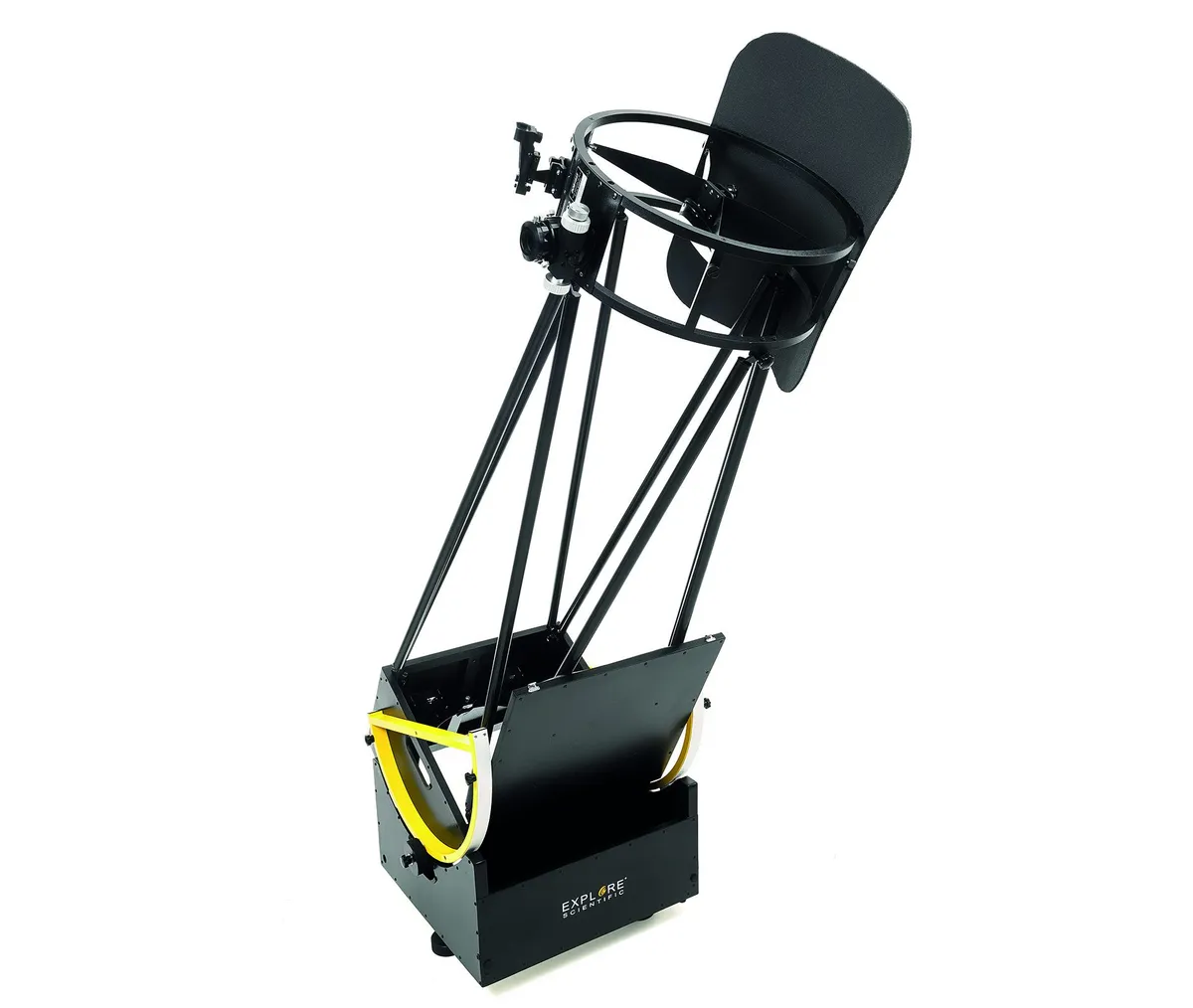
In fact the views offered by a relatively modest reflector can compare favourably with those offered by expensive refractors.
Dobsonians may be elegantly simple affairs - no wires, no batteries, you just point it at what you want to see - or they may include a full ‘Go-To’ control, which can automatically point the telescope at hundreds of sky objects.
There are compromises, as reflectors need their mirrors adjusting from time to time, although this shouldn’t put you off.
However, they can be heavy, bulky items that are awkward to take outside and bring back in, or to transport to darker sites, and they can take up a lot of room when not in use.
The largest Dobsonian models, although collapsible into manageable components, may even require the use of a stepladder when viewing objects high overhead!
Cassegrains
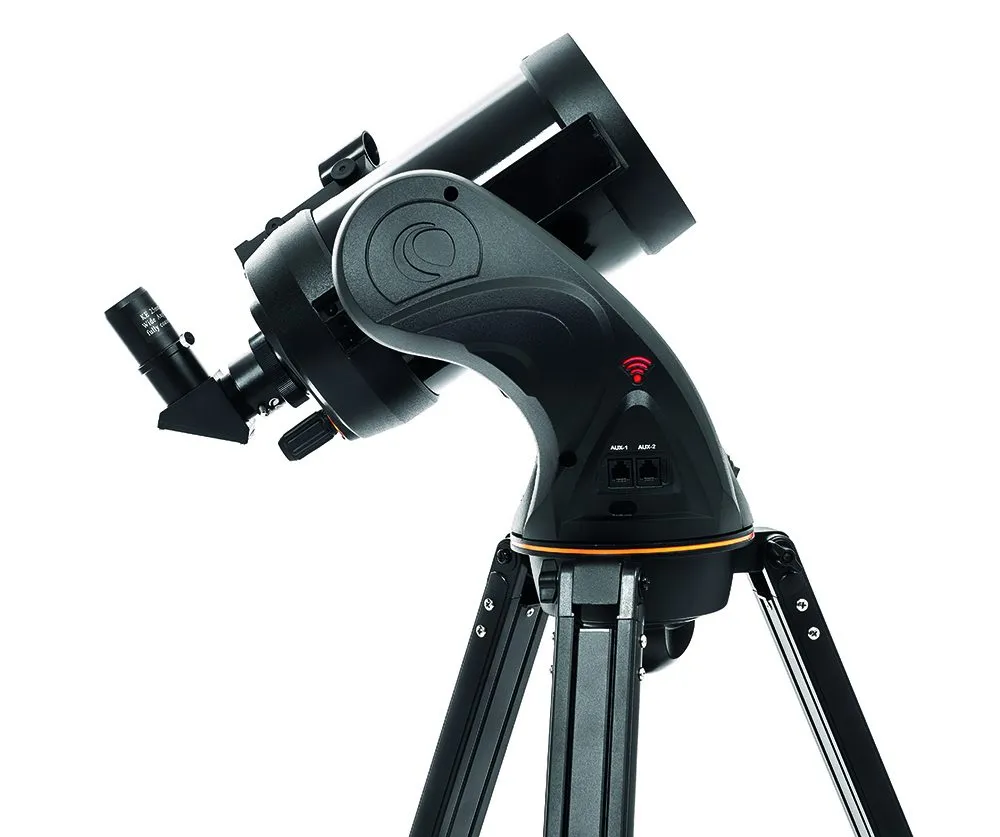
In use, Cassegrain telescopes are quite similar to refractors, in that you point the front end at the sky and you look into an interchangeable eyepiece on the back.
Comparatively heavy, they tend to be shorter lengthwise, and this compactness makes them ideal where storage space is limited.
These telescopes may need a little tweaking from time to time, to make sure the mirrors are lined up properly.
Cassegrain designs give a comparatively more magnified view for a given size of eyepiece, and for those wishing to experience the best views of the planets and our Moon, a Maksutov-Cassegrain or a Schmidt-Cassegrain telescope may well be the best option.
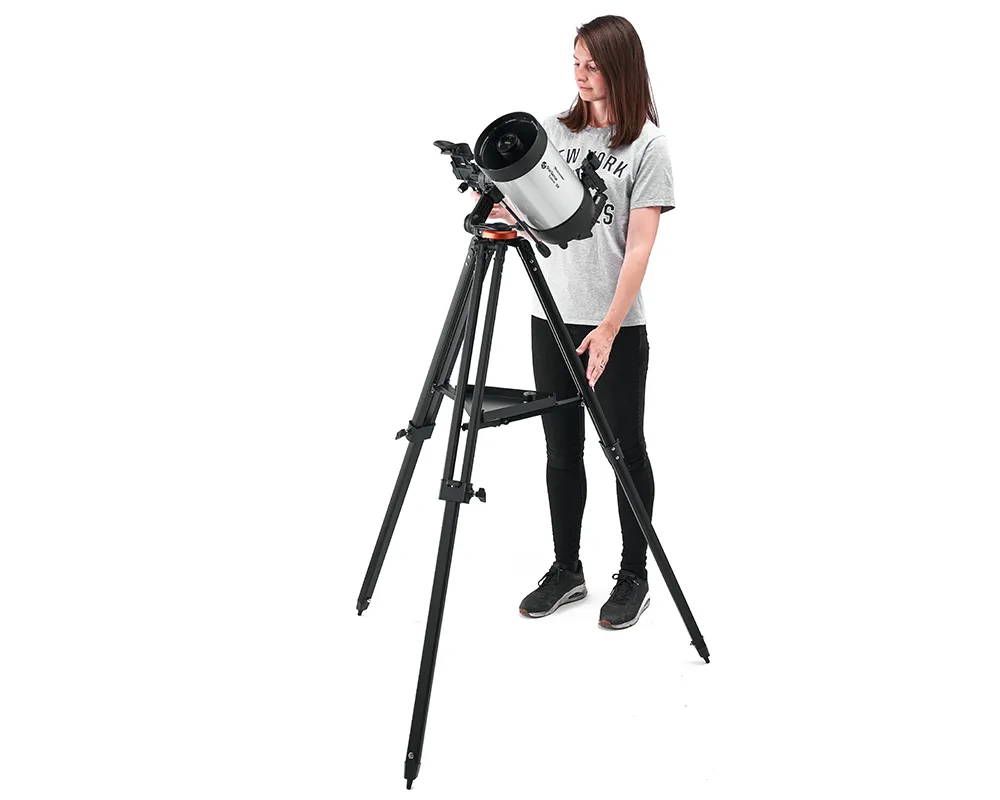
When sky conditions allow, details can be seen within the coloured bands of Jupiter and various colour bands on Saturn, along with the Cassini and other divisions of Saturn’s glorious ring system, not to mention polar caps and features on Mars.
Of course, other deep-sky objects may be viewed, with larger aperture Schmidt-Cassegrains providing the most satisfying experience.
Although the views may not be quite as tack sharp as those from refractors, they are a popular choice as a happy compromise between large enough aperture and manageable size.
Because of the higher magnifications provided by these telescopes, the object being observed will more quickly move out of view, and so they are often purchased with electronic tracking mounts to follow the targets as they move.
Taking the next step
The right telescope for you can be determined by deciding where and how you will use your telescope; maybe at home, or perhaps to take to dark-sky sites.
All three designs are available as basic models or with fully computerised controls and even built-in wi-fi for operation via smartphone.
A grab and go’ simple setup may best suit your needs, or you may want more complicated equipment with fully automatic operation to reveal more wonders of the night sky.
Whatever your choice, refractor, reflector, Cassegrain, it is advisable to make your purchase from specialist astronomy dealers that know all about the telescopes they offer and can answer the inevitable questions.
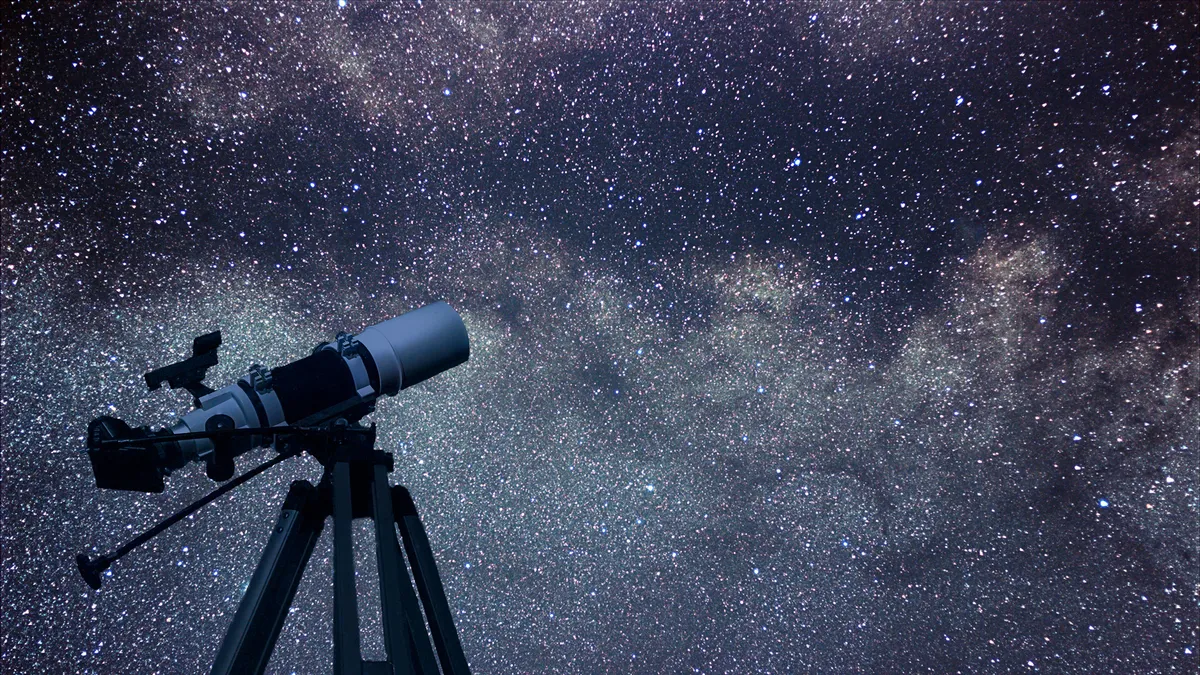
Telescopes: a buyers’ guide
There is a wide variety of telescope available on the market, and it pays to do research before buying. Our guide below provides a look at three different types at either end of the price spectrum.
2 refractors for beginners
Celestron StarSense Explorer LT 70AZ refractor
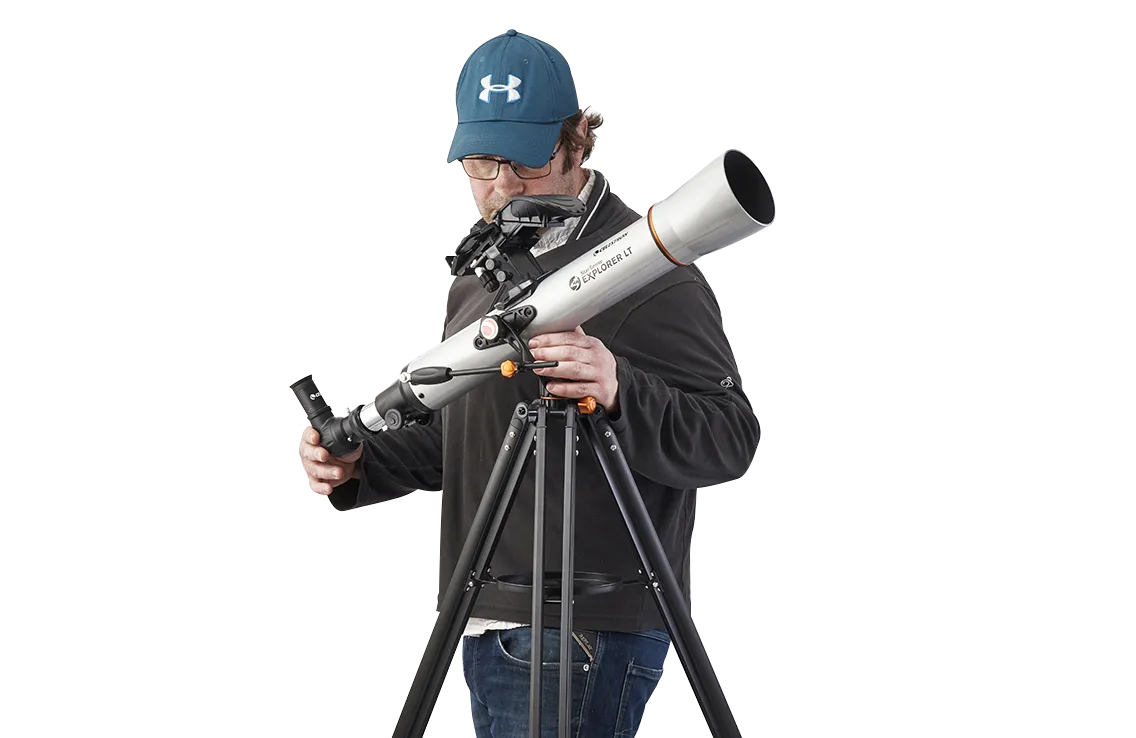
The LT 70AZ boasts a 70mm diameter front objective lens, fully coated optics and a focal length of 700mm.It comes as a sturdy yet lightweight aluminium tube mounted on an altaz fork mount and features slow-motion control.
The refractor comes with two eyepieces – 25mm and 10mm – plus a Barlow lens and erect image star diagonal.
One nifty inclusion is the StarSense Explorer phone dock, which can be used to fit a smartphone and turns this manual telescope into a hi-tech gadget that can locate celestial objects using your phone and the StarSense app.
This is a great refractor telescope that offers plenty of pleasing views and great ease-of-use.
Read our fullCelestron StarSense Explorer LT 70AZ review.
Sky-Watcher Evostar 150ED DS-Pro refractor
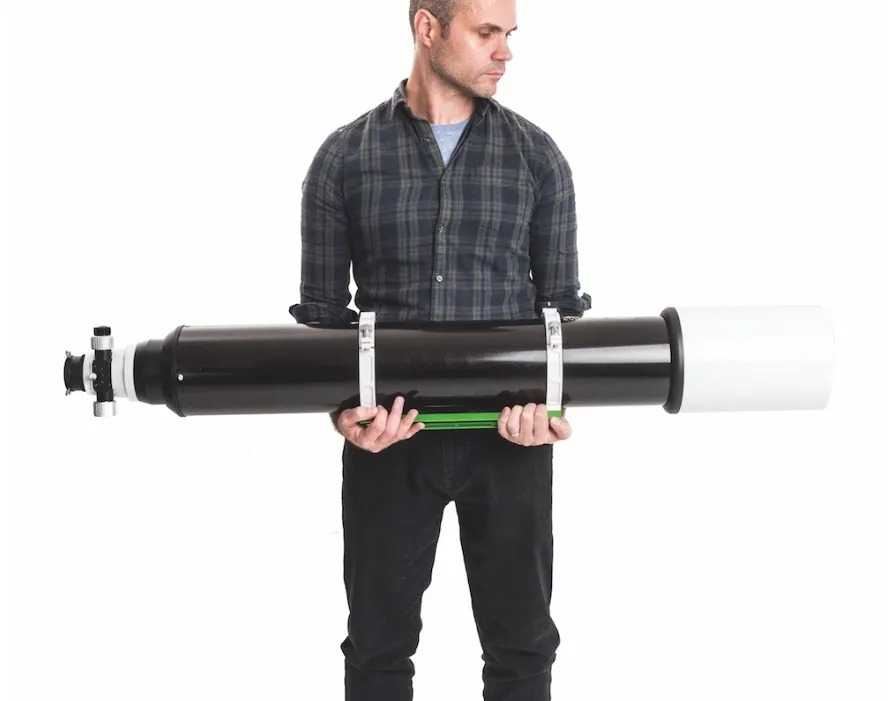
At six inches in diameter the Evostar 150ED DS-Pro is probably the maximum manageable size refractor for most amateur astronomers.
We performed some astrophotography tests with the telescope and found no evidence of unwanted reflections or artefacts, while a star test showed that the lens cell holds the glass without skewing or pinching, even despite drops in temperature greater than 10°C.
The telescope’s large aperture makes finding fainter objects simpler, and even though we were observing under moonlit skies and a touch of light pollution we were still able to see both sections of the Veil Nebula complex with an OIII filter and 21mm eyepiece.
Also, we found that planetary nebulae M57 and M27 contrasted the background sky very well indeed. We took a look at globular clusters and open clusters and found these sharp and clear: so too lunar views and in particular crater walls.
Read our full Sky-Watcher Evostar 150ED DS-Pro refractor review.
Where to buy: High Point Scientific
2 reflectors for beginners
Sky-Watcher Explorer-130PS
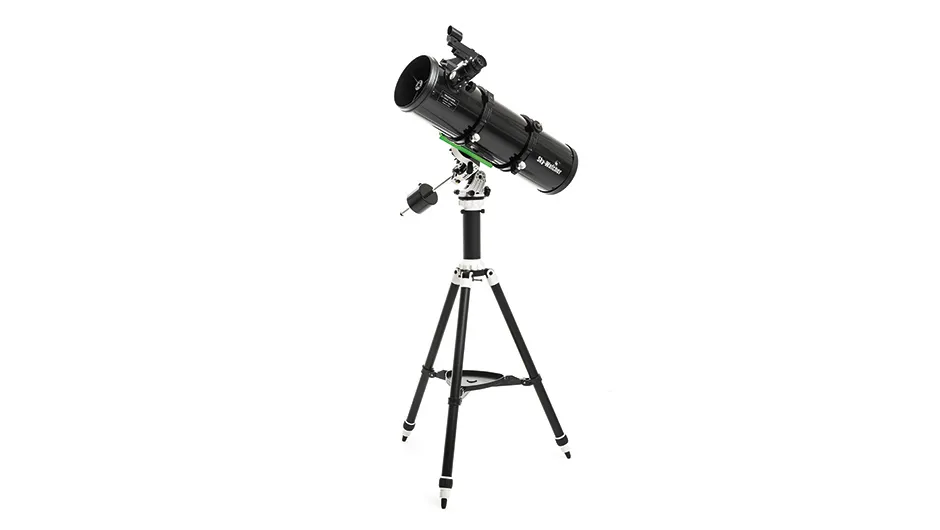
Sky-Watcher’s Explorer-130PS and AZ-EQ Avant mount are a light and compact combo designed with beginner astronomers in mind. The whole setup is easy to assemble and operate and certainly provides a welcoming introduction to observing the night sky.
The Newtonian design uses a parabolic primary mirror to collect and focus light from your celestial target, while a flat secondary mirror reflects it to the eyepiece.
The Explorer-130PS is equipped with a fixed mirror cell for the primary mirror, which many will be pleased to hear comes pre-collimated, meaning it should only need adjustment every now and then with the supplied Allen key.
Of course, the mount is as important as the scope itself, and the dual-mode AZ-EQ Avant doesn’t disappoint. It’s quick to assemble and provides a sturdy platform. An accessory tray for eyepieces also makes for a good as a tripod-leg tensioner to help stabilise the setup.
Read our full Sky-Watcher Explorer-130PS telescope review.
Orion Optics VX8
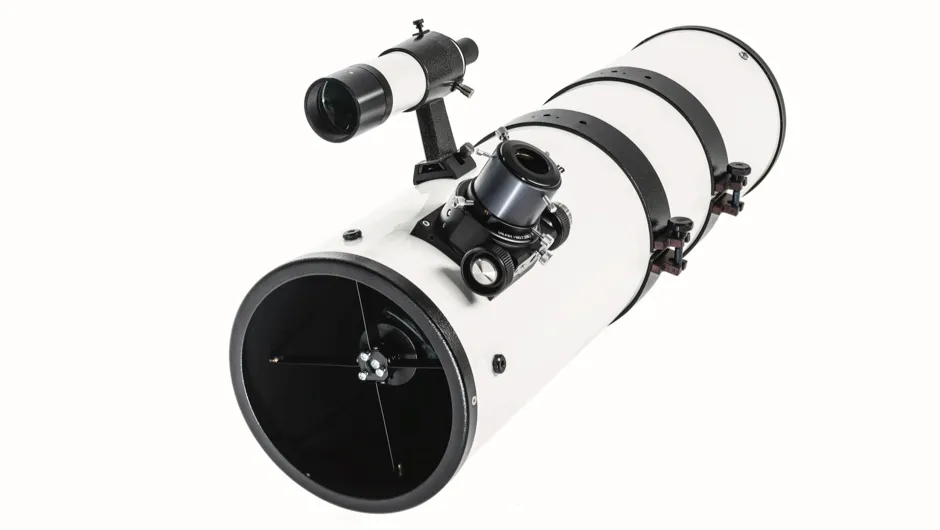
Orion Optics’ VX series is designed for amateur astronomers on the lookout for a telescope that’s easy to use yet offers high quality.
The VX8 is affordable system, and with the rolled aluminium tube weighing 7kg and measuring just 86cm long, many will find this easy to transport and lift onto a mount using the tube rings and dovetail bar.
The tube is finished in white with black trim and is comes with a straight-through 8×50 finderscope, ACU-2S 2-inch (50.8mm) Crayford focuser with a 1.25- to 2-inch adaptor and a cooling fan at the base.
We enjoyed views of the Pleiades, the Perseus Double Cluster, the Dumbbell Nebula, the Ring Nebula and the galaxy pair of M81 and M82 in Ursa Major, among others. The Hercules Globular Cluster showed swarms of stars and the dark ‘propeller’ feature.
Read our full Orion Optics VX8 review.
Where to buy: Orion Optics
2 Dobsonians for beginners
Bresser Messier 8-inch Dobsonian
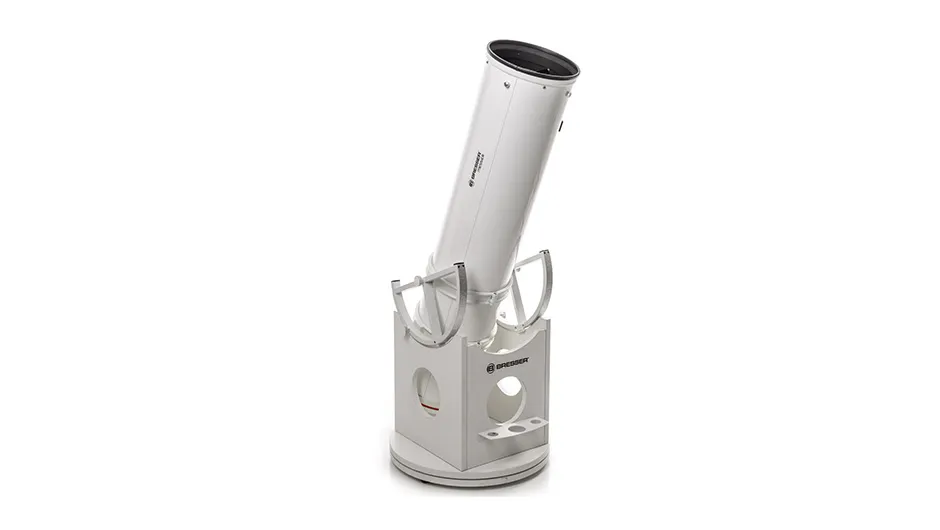
An altaz Dobsonian telescope makes for a great beginner telescope, as simplicity is the name of the game. The Bresser Messier 8-inch, f/6 Dobsonian is a great example of why this is the case.
The telescope comes with a red-dot finder, a 25mm Plössl eyepiece, an extension tube for the focuser and an eyepiece rack that can store two 1.25-inch eyepieces and a 2-inch eyepiece.
The telescope tube comes with tube rings attached, but the rocker base on which it sits is a flat-pack and requires a bit of assembly. But we found the rocker to be light and not too big, so you don’t need to take it apart if you want to transport it to a darker site away from light pollution.
Indeed, one of the great things about this scope is that you can set it up and get observing within minutes. This also helps take advantage of breaks in the clouds.
Read our full Bresser Messier 8-inch Dobsonian review.
Where to buy: Bresser
Omegon ProDob N 203/1200
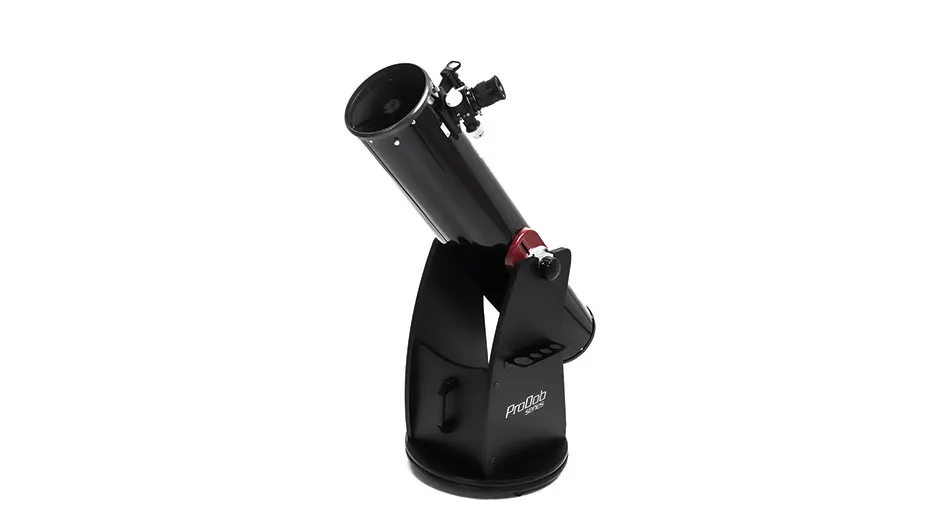
Assembly of the Omegon ProDob N 203/1200 is straightforward, and we found that setting it up to observe at night was so simple, we could get it out several times just for a quick 10-minute session.
This is helped by the light rocker box, which most people would find easy to move into an observing spot.
A 32mm super wide angle eyepiece, mirror-cooling fan, battery box and a red dot finder complete the system.
We observed Jupiter and found the planet snapped into focus and we could see belt and spot features. We view the Hercules Globular Cluster and the famous double binary Epsilon Lyrae. We also observed the Ring Nebula and found all of these targets looked amazing.
On other nights we achieved similar results, with the scope’s high-contrast optics producing great views of deep-sky objects and making the Moon in particular quite mesmerising.
Read our full Omegon ProDob N 203/1200 review.
Where to buy: Omegon
2 Cassegrains for beginners
Sky-Watcher SkyMax 180 Pro
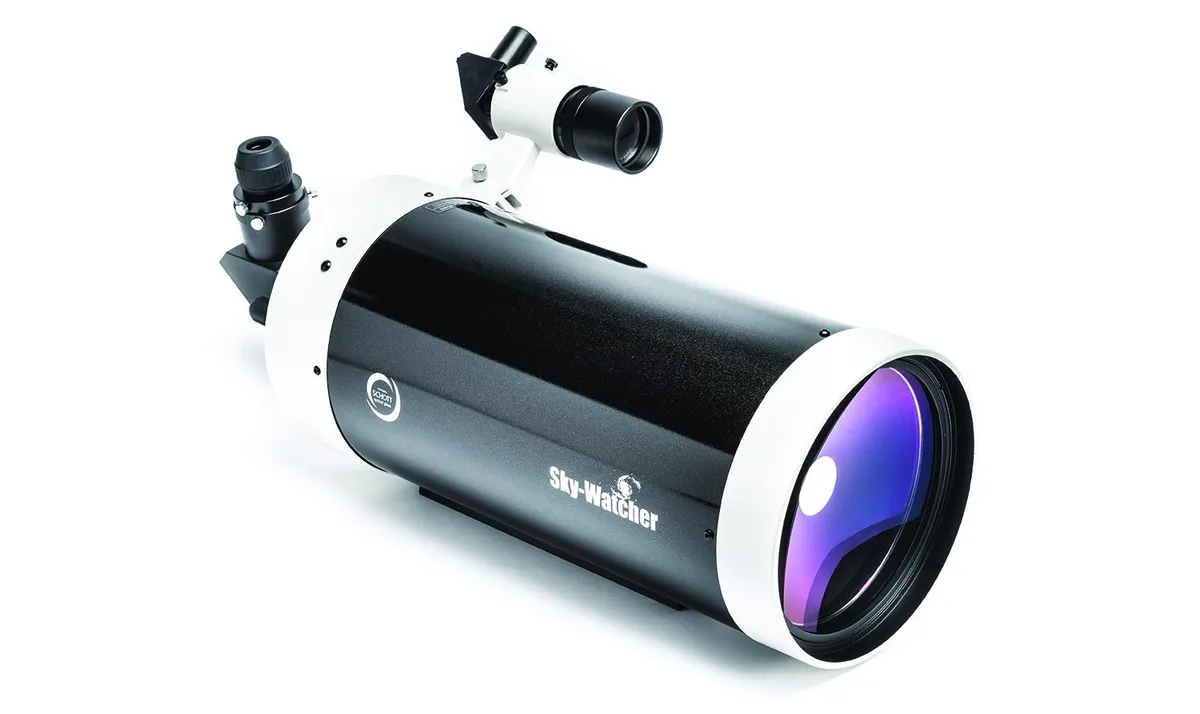
Maksutov-Cassegrain telescopes use mirrors and a front corrector lens to make for a compact, relatively portable optical tube.
The 2,700mm focal length of the Sky-Watcher SkyMax 180 Pro Maksutov-Cassegrain folds into a tube just 500mm long. This long focal length makes it great for planetary and lunar viewing, but it is also good for observing many deep-sky objects, too.
And, along with a tube width of 216mm, it really is quite compact. At just 7.8kg too, it is also relatively lightweight for its size.
We used an EQ5 SynScan mount and found it could could handle it, but the larger NEQ6 mount offered the best performance.
We also attached a DSLR camera and were able to capture views of the Moon, as well as long, tracked exposures of deep-sky objects.
This is an instrument not just for visual observing, but can also be used for deep-sky astrophotography.
Read our full Sky-Watcher SkyMax 180 Pro review.
Celestron Nexstar 8SE
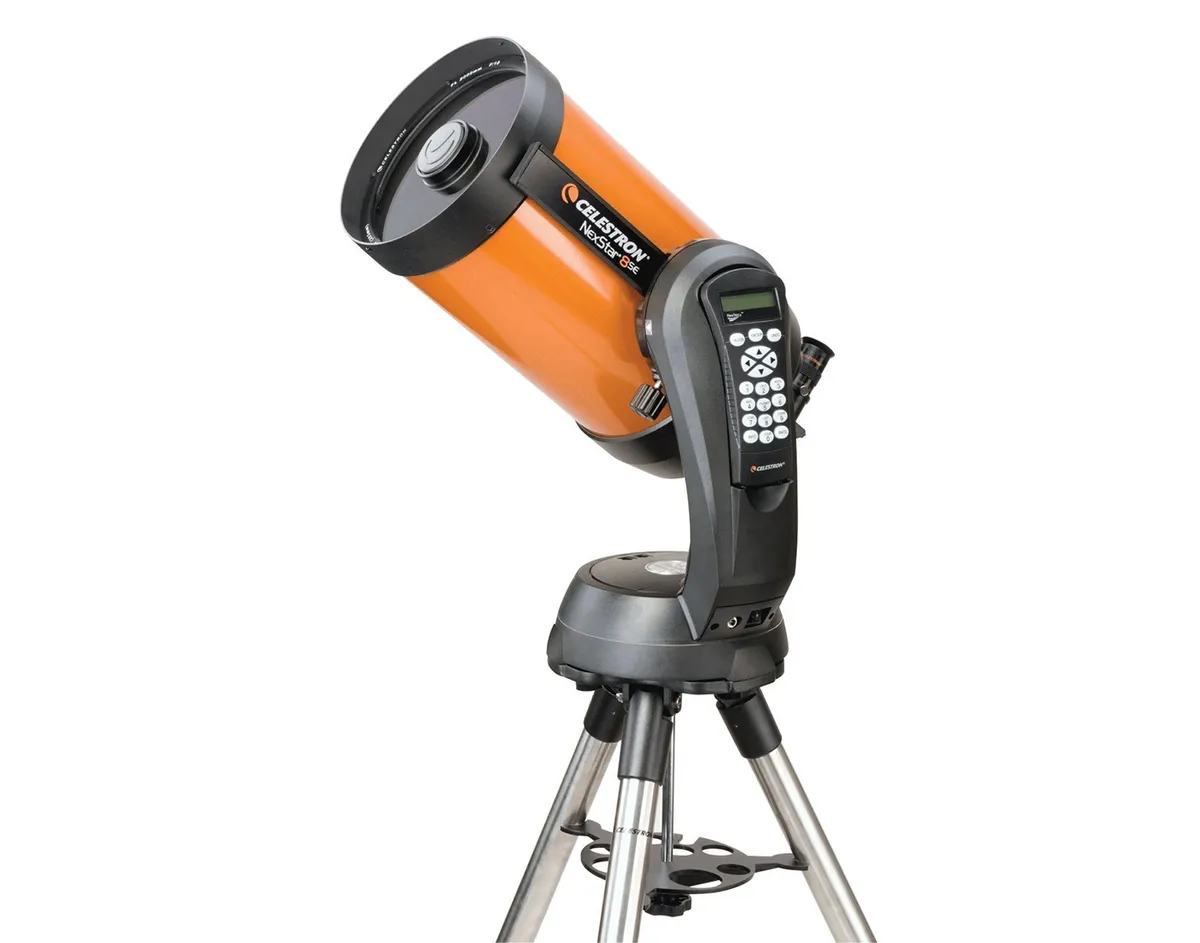
The NexStar 8SE is an 8-inch Schmidt-Cassegrain boasting a focal length of 2,032mm, fit into a compact orange tube weighing in at 11kg. It was first introduced to amateur astronomers in 1970, and it’s not difficult to see why it’s such a popular telescope even today.
It comes with a StarPointer red-dot finder, E-Lux 25mm, 1.25-inch fit Plössl eyepiece and a star diagonal.
Testing its Go-To and tracking system showed good results, and we found the the object we selected was almost always placed close to the centre and nicely crisp and clear.
With its ease of use and the great views we had with it, it’s not hard to see why the C8 continues to thrive.
Read our full Celestron NexStar 8SE Schmidt Cassegrain review.
